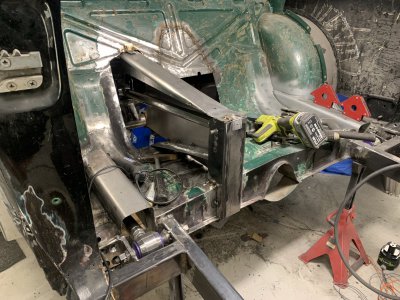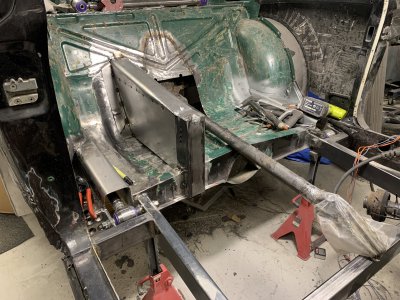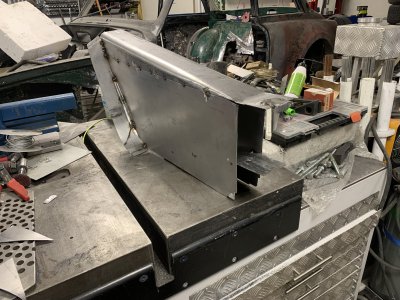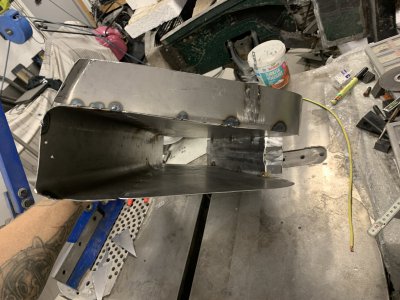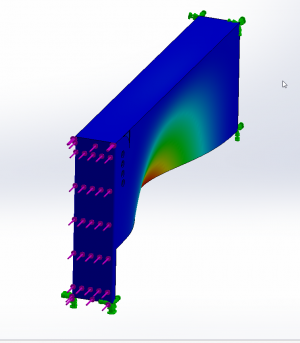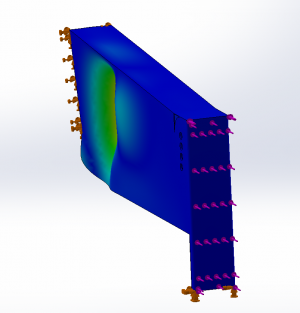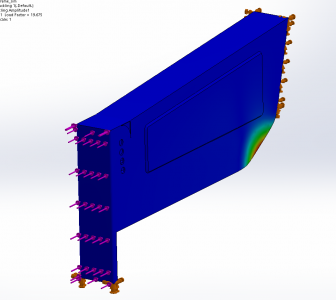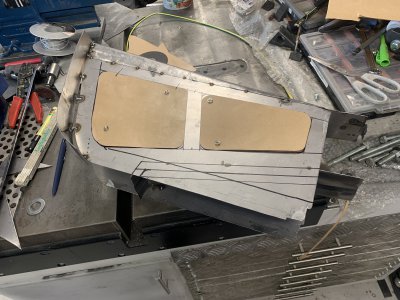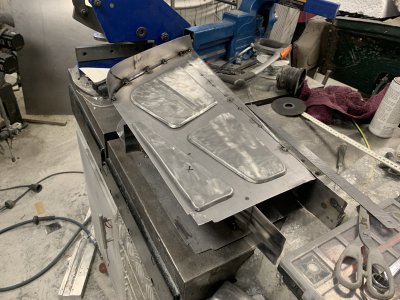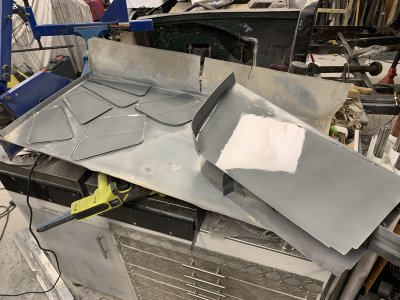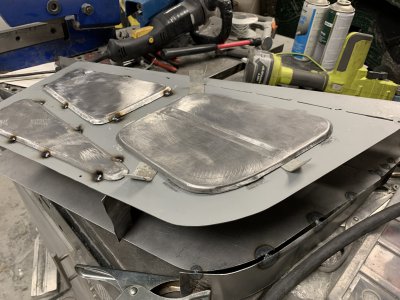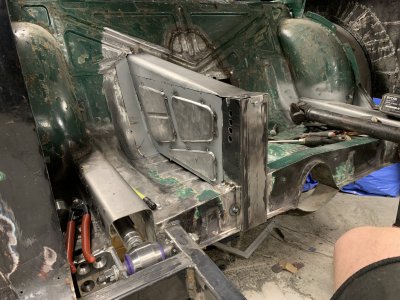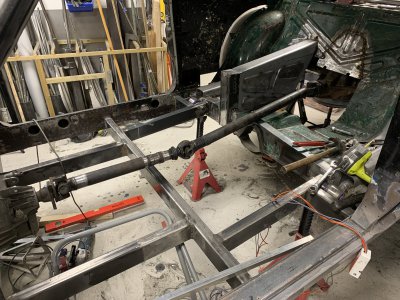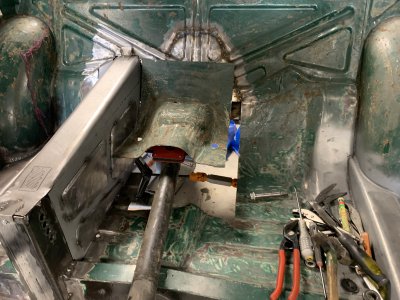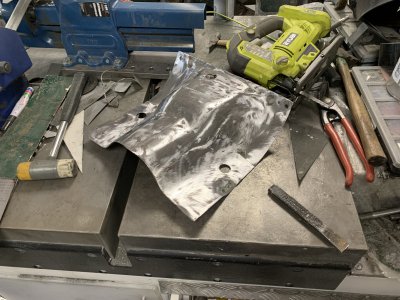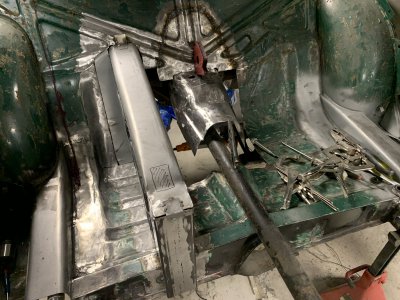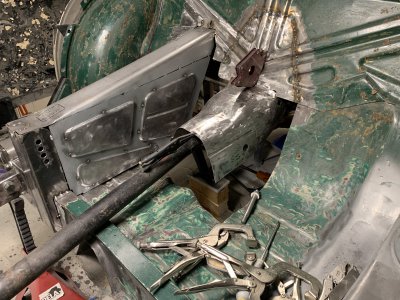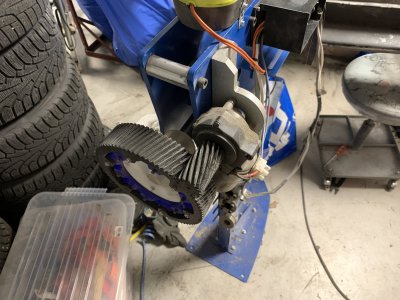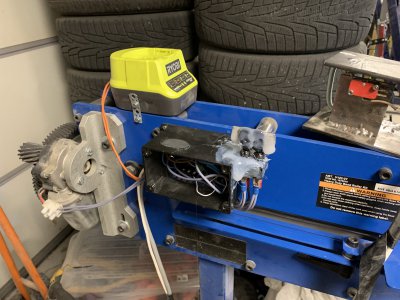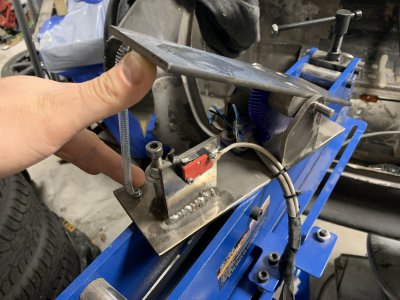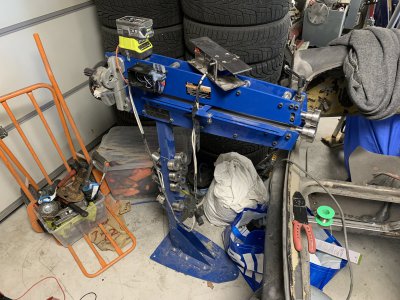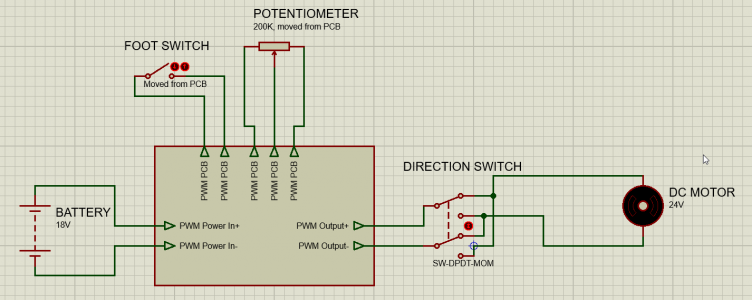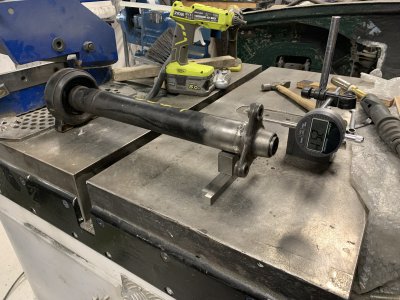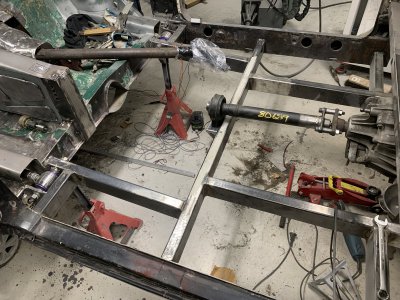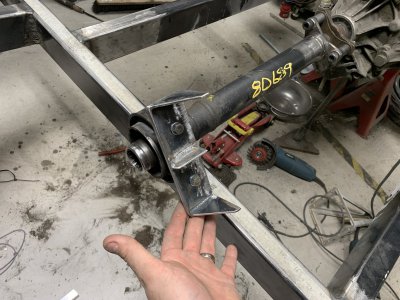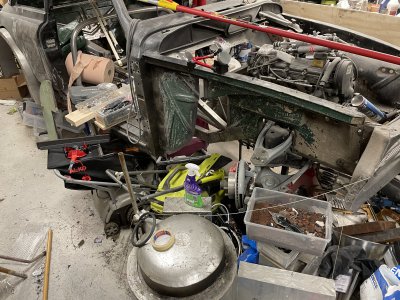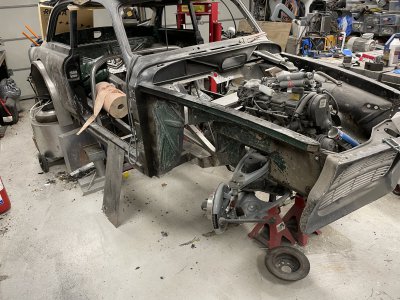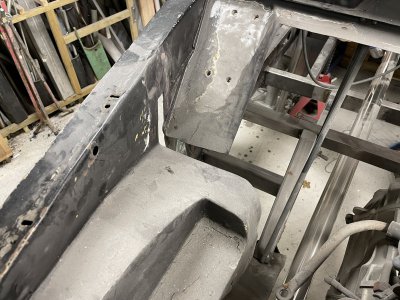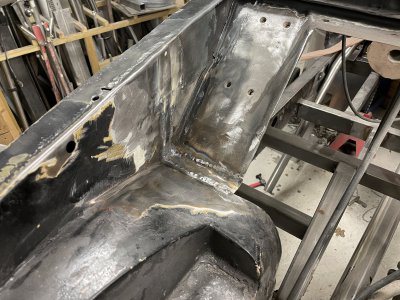- Joined
- Nov 7, 2019
- Messages
- 483
Well, figured out the linkage problem, I had just used the wrong hole on the upper axle mount...
Everything is good, checked suspension travel which is enough to fulfill the requirements. Might be tight to get springs and shocks in but that's a problem for future-me.
The weekends harvest.. Ended up needing to cut away quite a bit more to make the repair easier.
Panhard mount on the left was also removed, will fabricate a new one that sits where I want it.
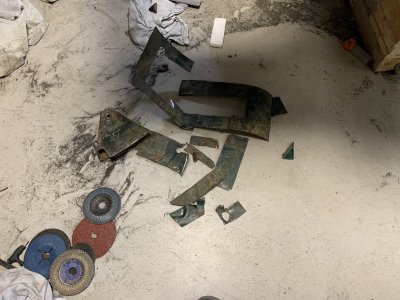
Of course the "frame" was in bad condition here as well.
Need to repair before I even think about making a new panhard mount, but my neck really does not like laying underneath the car right now so maybe this will have to wait until I can reinforce the car and turn it on it's side or something.
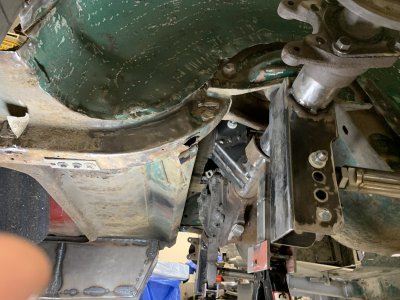
The view from the trunk.
Quite a bit of floor needed to be removed to make space for the differential and upper mount.
Will hammer some 2mm steel into shape to fill this in, with a folded down piece in the front that can get spotwelded to the new backseat wall.
The goal is to make it look as unmodified as possible where I can, just for esthetics.
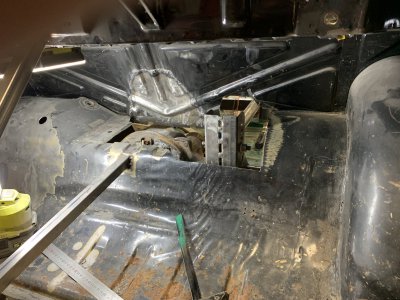
I think my next task will be trying to close this back up again.
I will try to make a box of sorts around the upper link, down to the floor/seat area and then reinforce the backwall with an extra brace.
Should make the front mount strong enough and spread any load from it.
Combined with it will be a new driveshaft tunnel which should, hopefully, finish off the sheet work in the backseat area.
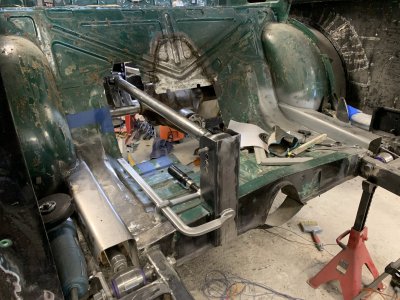
Everything is good, checked suspension travel which is enough to fulfill the requirements. Might be tight to get springs and shocks in but that's a problem for future-me.
The weekends harvest.. Ended up needing to cut away quite a bit more to make the repair easier.
Panhard mount on the left was also removed, will fabricate a new one that sits where I want it.

Of course the "frame" was in bad condition here as well.
Need to repair before I even think about making a new panhard mount, but my neck really does not like laying underneath the car right now so maybe this will have to wait until I can reinforce the car and turn it on it's side or something.

The view from the trunk.
Quite a bit of floor needed to be removed to make space for the differential and upper mount.
Will hammer some 2mm steel into shape to fill this in, with a folded down piece in the front that can get spotwelded to the new backseat wall.
The goal is to make it look as unmodified as possible where I can, just for esthetics.

I think my next task will be trying to close this back up again.
I will try to make a box of sorts around the upper link, down to the floor/seat area and then reinforce the backwall with an extra brace.
Should make the front mount strong enough and spread any load from it.
Combined with it will be a new driveshaft tunnel which should, hopefully, finish off the sheet work in the backseat area.


